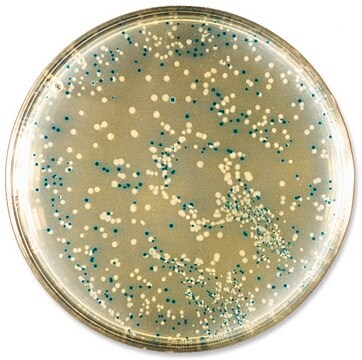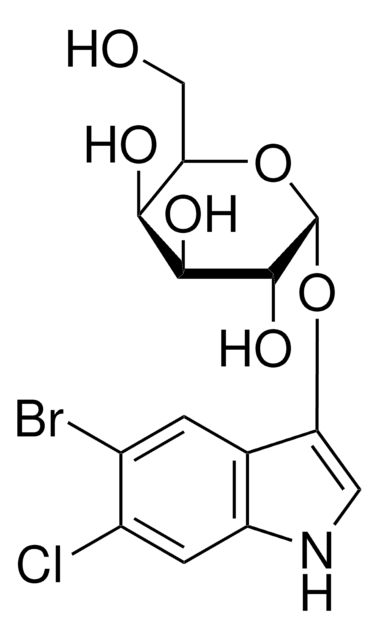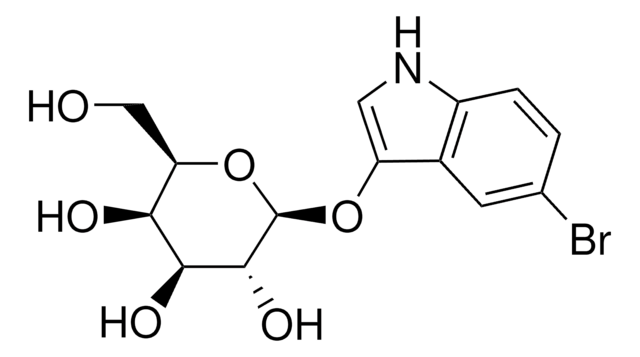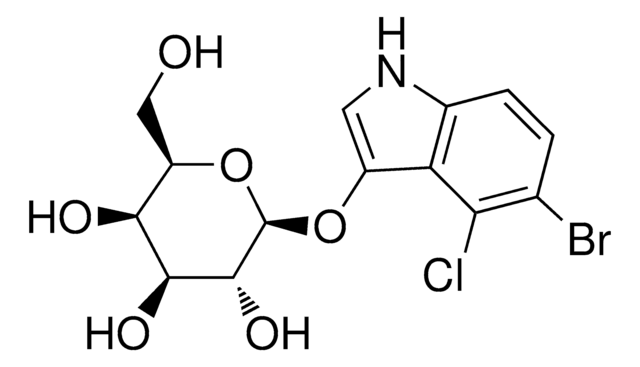C4478
S-Gal®/LB Agar Blend
reagent for selection of recombinant bacterial clones
Sinônimo(s):
Agar Blend
About This Item
Produtos recomendados
grau
for molecular biology
esterilidade
non-sterile
forma
powder
técnica(s)
microbiological culture: suitable
adequação
suitable for β-galactosidase test
nonselective for Escherichia coli
nonselective for coliforms
aplicação(ões)
food and beverages
microbiology
temperatura de armazenamento
room temp
Categorias relacionadas
Descrição geral
Aplicação
Características e benefícios
- More intense color contrast than X-gal
- Water-soluble and autoclavable for easiest use
- Convenient, pre-mixed media
Componentes
Tryptone, 10
Yeast extract, 5
Sodium chloride, 10
Agar, 12
S-Gal, 0.3
Ferric ammonium citrate, 0.5
IPTG, 0.03
Princípio
Nota de preparo
Outras notas
formulation. A medium prepared with S-Gal® is moderately dark due to the presence of ferric ammonium citrate. This darker background often provides enhanced contrast for automated colony counting or isolation.
Informações legais
produto relacionado
Código de classe de armazenamento
11 - Combustible Solids
Classe de risco de água (WGK)
WGK 3
Ponto de fulgor (°F)
Not applicable
Ponto de fulgor (°C)
Not applicable
Equipamento de proteção individual
Eyeshields, Gloves, type N95 (US)
Certificados de análise (COA)
Busque Certificados de análise (COA) digitando o Número do Lote do produto. Os números de lote e remessa podem ser encontrados no rótulo de um produto após a palavra “Lot” ou “Batch”.
Já possui este produto?
Encontre a documentação dos produtos que você adquiriu recentemente na biblioteca de documentos.
Os clientes também visualizaram
Nossa equipe de cientistas tem experiência em todas as áreas de pesquisa, incluindo Life Sciences, ciência de materiais, síntese química, cromatografia, química analítica e muitas outras.
Entre em contato com a assistência técnica








